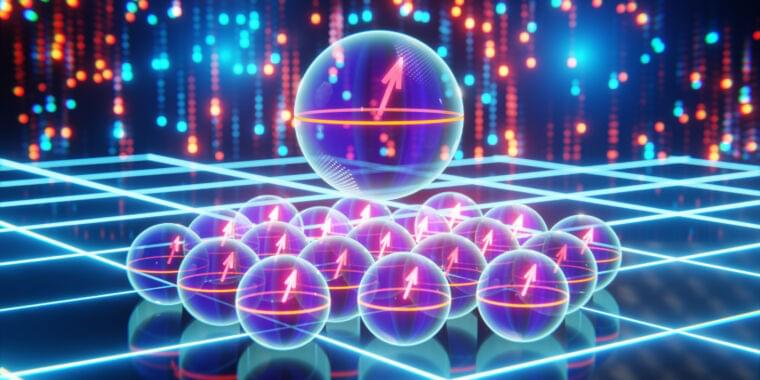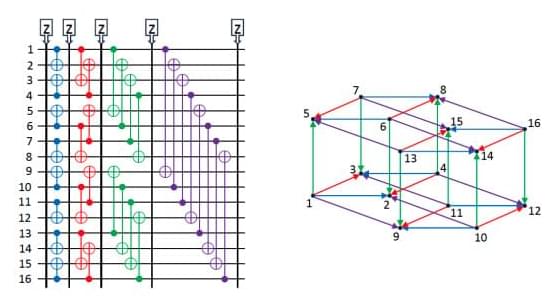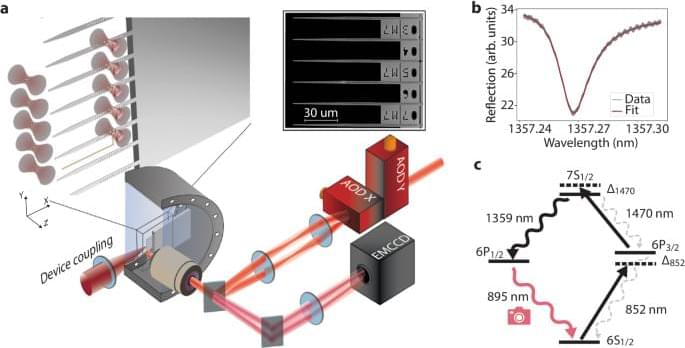Error-correcting a quantum computer can mean processing 100TB every second.


Quantum: Check out Our Video on Aduro: https://twobit.link/AduroVideoLearn More About Aduro: https://twobit.link/AduroQuantum Computers are are confusing and…

In an era where the internet connects virtually every aspect of our lives, the security of information systems has become paramount. Safeguarding critical databases containing private and commercial information presents a formidable challenge, driving researchers to explore advanced encryption techniques for enhanced protection.
Data encryption, a cornerstone of modern security practices, transforms readable plaintext into encoded ciphertext, ensuring that only authorized recipients can decipher the data using a decryption key or password. Optical techniques have emerged as promising tools for encryption due to their capabilities for parallel, high-speed transmission, and low-power consumption. However, traditional optical encryption systems often suffer from vulnerabilities where plaintext-ciphertext forms remain identical, potentially compromising security.
Reporting in Advanced Photonics Nexus, scientists have unveiled an approach inspired by bio-inspired neuromorphic imaging and speckle correlography. Their innovative technique leverages computational neuromorphic imaging (CNI) to encrypt images into event-stream ciphertexts, marking a significant departure from conventional methods. This method introduces a new paradigm in optical encryption by converting data into event-driven formats, thereby significantly enhancing security and complexity.

As the name suggests, most electronic devices today work through the movement of electrons. But materials that can efficiently conduct protons—the nucleus of the hydrogen atom—could be key to a number of important technologies for combating global climate change.
Most proton-conducting inorganic materials available now require undesirably high temperatures to achieve sufficiently high conductivity. However, lower-temperature alternatives could enable a variety of technologies, such as more efficient and durable fuel cells to produce clean electricity from hydrogen, electrolyzers to make clean fuels such as hydrogen for transportation, solid-state proton batteries, and even new kinds of computing devices based on iono-electronic effects.
In order to advance the development of proton conductors, MIT engineers have identified certain traits of materials that give rise to fast proton conduction. Using those traits quantitatively, the team identified a half-dozen new candidates that show promise as fast proton conductors. Simulations suggest these candidates will perform far better than existing materials, although they still need to be conformed experimentally. In addition to uncovering potential new materials, the research also provides a deeper understanding at the atomic level of how such materials work.

The quantum advantage, a key goal in quantum computation, is achieved when a quantum computer’s computational capability surpasses classical means. A recent study introduced a type of Instantaneous Quantum Polynomial-Time (IQP) computation, which was challenged by IBM Quantum and IonQ researchers who developed a faster classical simulation algorithm. IQP circuits are beneficial due to their simplicity and moderate hardware requirements, but they also allow for classical simulation. The IQP circuit, known as the HarvardQuEra circuit, is built over n 3m 32k inputs. There are two types of simulation for quantum computations: noiseless weak/direct and noisy.
The quantum advantage is a key goal for the quantum computation community. It is achieved when a quantum computer’s computational capability becomes so complex that it cannot be reproduced by classical means. This ongoing negotiation between classical simulations and quantum computational experiments is a significant focus in the field.
A recent publication by Bluvstein et al. introduced a type of Instantaneous Quantum Polynomial-Time (IQP) computation, complemented by a 48-qubit logical experimental demonstration using quantum hardware. The authors projected the simulation time to grow rapidly with the number of CNOT layers added. However, researchers from IBM Quantum and IonQ reported a classical simulation algorithm that computes an amplitude for the 48-qubit computation in only 0.00257947 seconds, which is roughly 103 times faster than that reported by the original authors. This algorithm is not subject to a significant decline in performance due to the additional CNOT layers.



Quantum information systems offer faster, more powerful computing methods than standard computers to help solve many of the world’s toughest problems. Yet fulfilling this ultimate promise will require bigger and more interconnected quantum computers than scientists have yet built. Scaling quantum systems up to larger sizes, and connecting multiple systems, has proved challenging.

